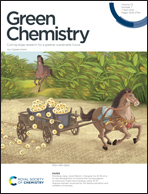Metal–organic framework-based functional catalytic materials for biodiesel production: a review
Abstract
Biodiesel is a type of widely recognized environmentally friendly and sustainable biofuel. The key point for the industrial manufacturing of biodiesel is its cost, especially the price of raw oil feedstocks. Oil feedstocks of low quality require highly effective catalysts with more active sites (e.g., acid, base, acid–base, and enzyme) for (trans)esterification. Metal–organic framework (MOF) is a kind of polyporous material that can control its pore size and topological structure to fit the requirements of the catalytic reactions or conversion routes. This review focuses on the application of MOF-based catalysts in the preparation of biodiesel. Two methods of linking the active sites with MOF are introduced including intermolecular forces and chemical bridging or bonding. Four kinds of MOF-based nanocatalysts (i.e., enzyme, base, acid, and bifunctional catalysts) are evaluated and compared with other heterogeneous catalysts. Besides, technologies such as ultrasound and microwave for MOF-based nanocatalyst applications to produce biodiesel through transesterification and esterification are described. Finally, a brief conclusion and perspective for MOF-based nanocatalyst that applies to biodiesel production are provided. The MOF-based functional catalytic materials show great potential in biodiesel production and other relevant biorefineries.

- This article is part of the themed collection: Green Chemistry Reviews


 Please wait while we load your content...
Please wait while we load your content...